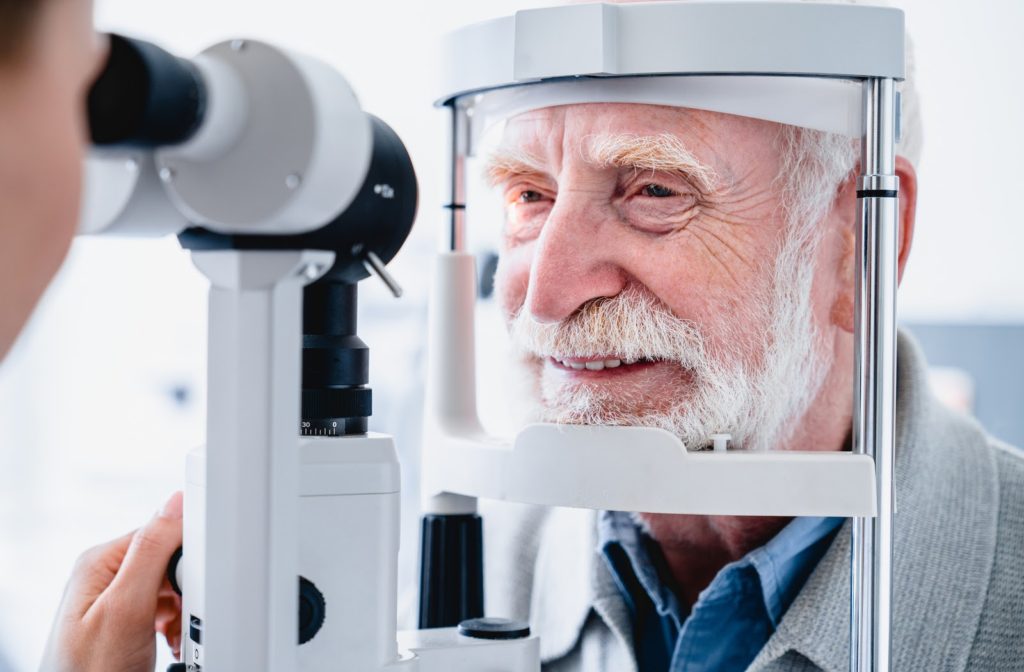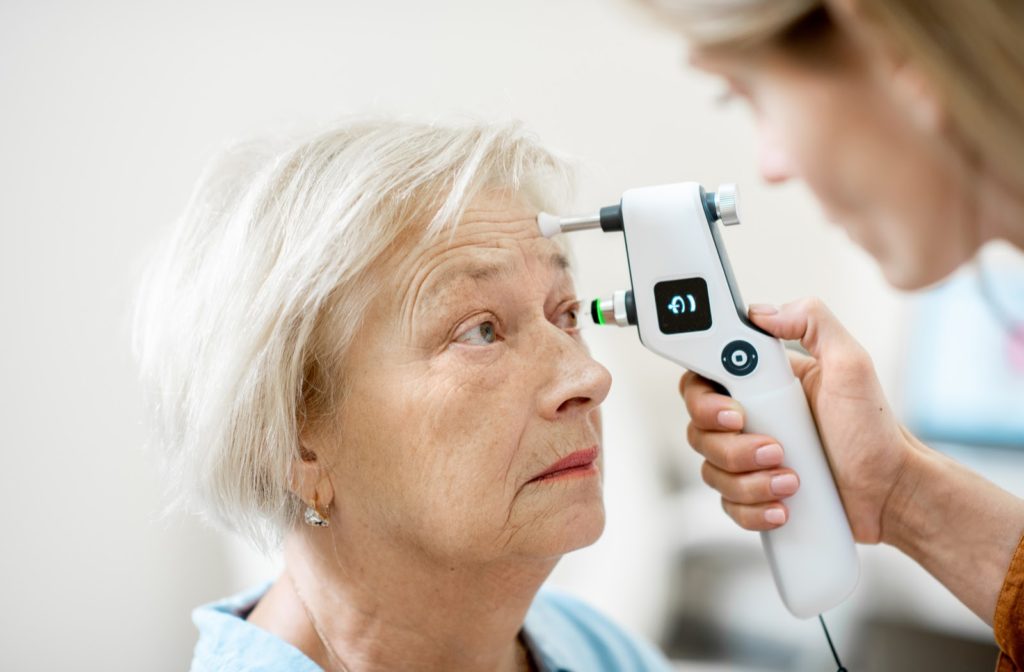At your last eye exam, you may remember having a puff of air or a small application placed on your cornea. These are common ways of measuring the intraocular pressure inside of your eye. Intraocular pressure measurements are a way to screen for eye conditions affecting the optic nerve, such as glaucoma.
Intraocular pressure helps to support your eye health, but what is it, and why is it important? Continue reading to learn more about intraocular pressure, its importance, and how it can affect your health.
What is Intraocular Pressure?
Intraocular pressure (IOP) is the fluid pressure of your eye. Essentially, it’s the amount of force the internal fluid is applying inside of your eye. IOP helps to maintain the shape of the eye with its consistent pressure.
The pressure level of your eye depends on 3 variables:
- How much fluid the eye produces
- Whether fluid can travel through the eye
- How well fluid drains from the eye
Your IOP isn’t a static number; it changes throughout your day. Tests measure eye pressure by millimetres of mercury (mm Hg).
While not everyone has the same IOP, the standard or “normal” range of pressure is between 10 to 21 mm Hg. The higher your eye pressure is, the greater the risk of damage to your optic nerve.
The optic nerve may sustain damage when your IOP is consistently above 27 mm Hg. You typically require medical treatment to lower pressure levels when this happens.
Despite higher pressure causing optic nerve damage, some people can have IOP consistently higher than 21 mm Hg without any complications. Medical professionals call this condition ocular hypertension.
IOP is more than an arbitrary pressure reading for your eyes. Your eye pressure can have a significant impact on your health. If high IOP can damage the optic nerve, why is your eye pressure important, and how can it affect you?
Why is Intraocular Pressure Important?
Your IOP helps to support the shape of your eye, helping you see the world around you. Besides supporting your eye’s structure, IOP can help your optometrist diagnose eye problems. Both high and low IOP levels may indicate possible health concerns.
Low Pressure
Low eye pressure is uncommon and usually occurs when there are complications during eye surgery. When your IOP is below 5 mm Hg, it’s called ocular hypotony. Low eye pressure increases the risk of eye conditions, like:
- Corneal swelling
- Cataracts
- Macula-related damage
High Pressure
High eye pressure typically occurs when the fluid in your eye can’t drain properly or produces too much fluid. Increased pressure can lead to glaucoma, one of the leading causes of blindness.
High eye pressure doesn’t always mean you’re developing glaucoma, but having high-pressure levels is concerning. Your optometrist will measure your IOP during a comprehensive eye exam, but they will likely perform other tests to look for signs of glaucoma.

What is Glaucoma?
Glaucoma is a group of eye conditions causing damage to the optic nerve, with many forms increasing the pressure within your eyes. This condition typically has minimal symptoms until vision loss occurs, so regular eye exams are vital to help identify glaucoma in its early stages.
Glaucoma isn’t a singular disease; different variants can affect you in different ways. The associated symptoms depend on the type of glaucoma. Some common forms of glaucoma include:
Intraocular Pressure & Glaucoma
High intraocular pressure doesn’t mean you’re guaranteed to have glaucoma, but it is concerning. Not every form of glaucoma affects your IOP, so someone with normal pressure levels can still develop glaucoma. For an accurate diagnosis, several tests must occur.
Because high pressure doesn’t directly lead to glaucoma, your optometrist has several tests to evaluate your eye health for early signs of this disease. These tests cover 5 factors related to your retina and optic nerve for an accurate diagnosis. Tonometry helps to measure your IOP, and there are 4 other common tests:
- Ophthalmoscopy (dilated eye exam)
- Perimetry (visual field test)
- Gonioscopy
- Pachymetry
All of these tests allow your optometrist to create an accurate glaucoma diagnosis. High IOP doesn’t directly cause the development of glaucoma, but it can be a factor.
Consistently low IOP doesn’t mean you can’t develop glaucoma. This disease is complex and multifactorial.
You can’t completely prevent glaucoma, but you can lower the risk of vision loss by having regular eye exams. Early glaucoma detection allows your optometrist to begin treatment sooner and prevent damage to the optic nerve.
Protect Your Eye Health
Your vision and ocular health are important, so you should protect them as best as you can. Regular eye exams can help you protect your vision and identify any problems. If it’s time for your regular eye exam, or you’re concerned about anything, book an appointment with your optometrist.


